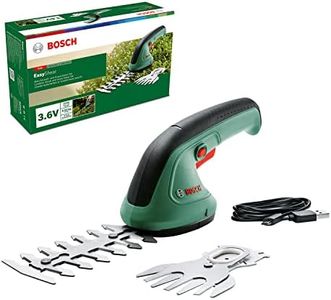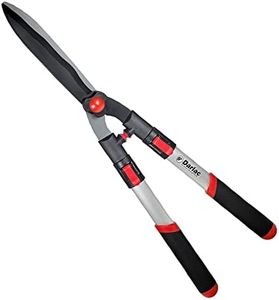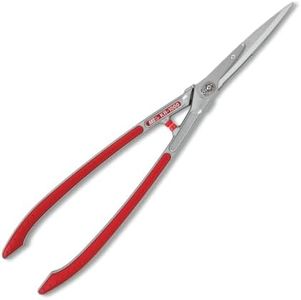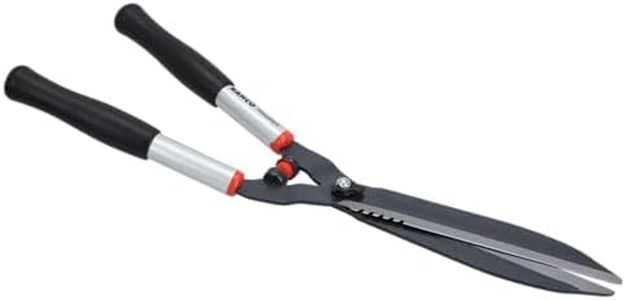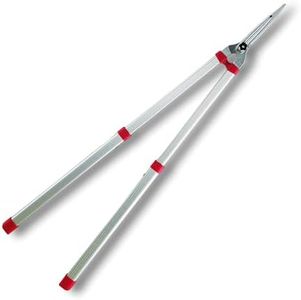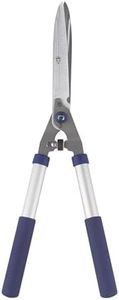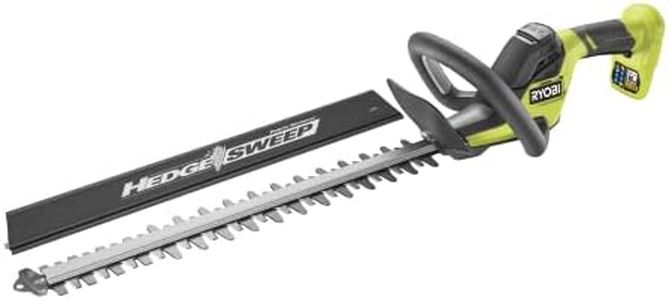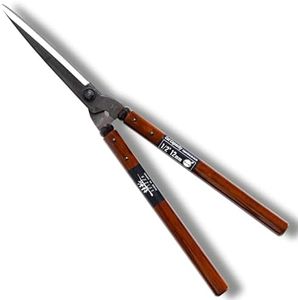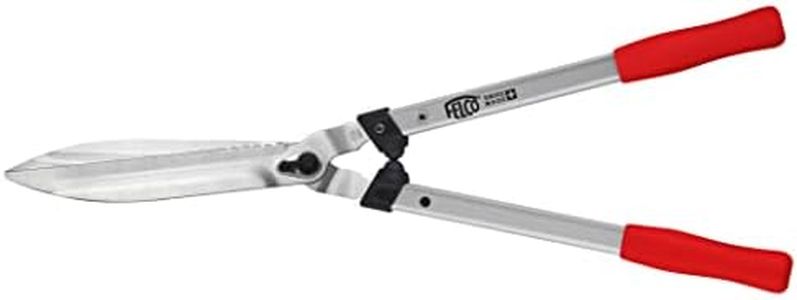We Use CookiesWe use cookies to enhance the security, performance,
functionality and for analytical and promotional activities. By continuing to browse this site you
are agreeing to our privacy policy
10 Best Hedge Shears
From leading brands and best sellers available on the web.Buying Guide for the Best Hedge Shears
Choosing the right hedge shears is important for both the quality of your garden work and your comfort while trimming. Hedge shears are designed to shape and maintain bushes, hedges, and sometimes even small branches. When picking hedge shears, it’s good to consider your garden’s needs and your own physical comfort. A good pair should cut cleanly, be easy to handle, and not tire you out quickly. Understanding the main features will help you pick the perfect tool for your specific use.Blade LengthBlade length refers to the size of the cutting blades, usually measured in inches. This is important because longer blades can trim larger sections faster, which is useful for big or tall hedges, while shorter blades allow for more precise work on smaller shrubs or intricate shapes. Generally, blade lengths under 8 inches are great for detailed, close-up work; 8 to 10 inches suit most average trimming tasks; and blades over 10 inches are ideal for tackling large hedges quickly. Choose a blade length that matches the scale of your hedge and how much fine detail you need when cutting.
Blade TypeThe blade type determines how the shears cut and how easy they are to use. Most hedge shears have either straight or wavy blades. Straight blades make clean, smooth cuts and are easy to sharpen, while wavy blades help grip branches as you cut, preventing them from slipping out. If you often trim soft, green shoots, straight blades might be best. If you regularly work with harder, thicker branches or want to avoid slipping, consider wavy blades.
Handle Length and MaterialHandle length affects both reach and control. Shorter handles give you more control for precise trimming but limit your reach, making them suitable for detailed shaping. Longer handles make it easier to reach tall or deep hedges, but they can make the tool feel heavier and harder to control. Handle materials range from wood, metal, to fiberglass or plastic, each affecting weight and comfort. Lighter materials are better for longer sessions or if you have limited strength, while some people prefer the solid feel of traditional wooden handles.
WeightWeight is a vital comfort factor. Heavy shears might tire your arms quickly, especially if you are doing extended work or reaching overhead. Lightweight shears are easier to maneuver and less tiring, but sometimes may feel less sturdy. Think about the duration and style of your work: for quick, simple trim jobs, weight is less of a concern, but for longer tasks, a lighter tool can make the experience much more pleasant.
Cutting MechanismSome hedge shears include features like gear mechanisms or shock-absorbing bumpers. Gear mechanisms can multiply your cutting power, making it easier to trim thicker branches. Shock-absorbing bumpers help reduce the impact on your hands and wrists at the end of each cut. If you deal with tough branches or want to reduce joint fatigue, look for these features.
Ease of MaintenanceEase of maintenance refers to how simple it is to clean, sharpen, and care for your shears. Blades that are easy to take apart or sharpen can help keep your tool in top shape for longer. If you prefer low-effort care, look for shears with accessible blades and rust-resistant materials.
